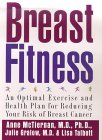|
 October is breast cancer awareness month. Dr. Anne McTiernan, M.D., Ph.D, Project Director at Fred Hutchinson Cancer Research Center in
Seattle for a breast fitness program, was the featured speaker at Friday’s meeting. Co-author of a new book titled “Breast Fitness,” Dr. McTiernan said that breast cancer is a common
disease, as was proven by a show of hands from the audience of members who knew of women with the disease. “As a matter of fact, 1 in 8 or 9 women are at
risk to get the disease … the risk has risen in the past decade. Breast cancer occurrence varies within countries, age groups, and cultures.” October is breast cancer awareness month. Dr. Anne McTiernan, M.D., Ph.D, Project Director at Fred Hutchinson Cancer Research Center in
Seattle for a breast fitness program, was the featured speaker at Friday’s meeting. Co-author of a new book titled “Breast Fitness,” Dr. McTiernan said that breast cancer is a common
disease, as was proven by a show of hands from the audience of members who knew of women with the disease. “As a matter of fact, 1 in 8 or 9 women are at
risk to get the disease … the risk has risen in the past decade. Breast cancer occurrence varies within countries, age groups, and cultures.”
“Twenty percent of women have a family history of breast cancer,” revealed Dr. McTiernan. Her public health sciences division at
Fred Hutchinson has studied extensively the connection between physical activity and breast cancer, resulting in the conclusion that exercise can contribute to decreasing the risk of breast cancer.
Studies have shown that genes, diet, physical activity, and environmental exposure all have something to do with the risk of
getting breast cancer. But, the “westernized countries have high rates of the disease, attributed to their more sedentary lifestyles. High automobile ownership signals less exercise … and higher
incidence of breast cancer,” the doctor said.
|

Dr. Anne McTiernan converses with BBRC members Ted Szatrowski [top] and Kim Shrader [bottom].

|
A study conducted by her research group on recreational exercise watched 537 participants in Western Washington, ages 50-64 years, enrolled
in an exercise program. They worked out three hours a week with high intensity exercise. The results over a 10-year period showed a 30%-40% reduction in breast cancer among the participants.
Dr. McTiernan outlined the reasons why exercise is so important. “First, a lot of energy is expended, and that’s good. Exercise
impacts the body and particularly effects hormones in women. Low estrogen rates reduce the risk of breast cancer. Percent body fat is an indicator
of the tendency to acquire the disease. Obesity is a prime culprit. High cholesterol and blood pressure contribute to the risk. High insulin production makes cancer cells grow. Exercise can reduce
all these factors, making the immune system stronger, resulting in fewer illnesses. Besides, exercise is associated with a healthy lifestyle.”
“Most women with breast cancer are not thin,” the doctor went on. “Our studies show they benefit by an exercise program. Obesity
increases the risk of breast cancer after menopause. And, there’s a direct correlation of a person’s body shape to increased risk. Risk increased with weight gained.”
New studies are trying to determine what kind of physical activity is best. How often should exercise occur? How much should a
person do? What age is best to start exercising? What is the diet’s role in all of this? And how does it all work to decrease the risk of breast cancer?
“As our population gets more sedentary, you can expect the number of breast cancer cases to rise,” Dr. McTiernan said. “Our
book, “Breast Fitness,” shows that women who exercise are no longer getting breast cancer and waiting to die as before. They are now working to survive, because more information is
available to help them.”
The book, “Breast Fitness,” co-authored by Dr. McTiernan, Dr. Julie Gralow and Lisa Talbot is available where books are sold,
published by St. Martin’s press.
Thanks to Bob Holert for his introduction.
|